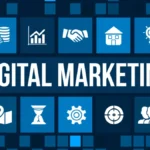Public Relations (PR), once a realm dominated by press releases and media kits, has undergone a radical transformation in the digital age. The advent of digital media, the rise of social media, and the power of data have reshaped the way PR professionals communicate with their target audiences. Let’s delve into the key aspects of this evolution.
The Digital Media Landscape
The internet has revolutionized the way information is consumed and shared. Digital media platforms have become the primary channels for news, entertainment, and social interaction. PR professionals now leverage these platforms to reach a wider audience and engage with them in real-time.
- Websites and Blogs: Organizations now have their own online presence through websites and blogs. These platforms enable them to share their brand story, company news, and thought leadership content directly with their audience.
- Email Marketing: Email remains a powerful tool for targeted communication. PR professionals use email to distribute press releases, newsletters, and invitations to events.
- Online Newsrooms: Online newsrooms provide journalists with easy access to press releases, media kits, and other relevant information. This streamlined approach enhances media relations and facilitates news coverage.
The Rise of Social Media
Social media platforms have transformed the way people connect and communicate. PR professionals have embraced these platforms to build relationships with their audience, manage brand reputation, and drive engagement.
- Social Media Listening: By monitoring social media conversations, PR professionals can identify emerging trends, respond to customer inquiries, and manage crises proactively.
- Influencer Marketing: Collaborating with influential individuals can amplify brand messages and reach a wider audience. PR professionals identify influencers who align with their brand values and engage them in campaigns.
- Social Media Campaigns: Creating engaging social media campaigns helps brands connect with their audience on an emotional level. These campaigns often involve user-generated content, contests, and live events.
Data-Driven PR
Data analytics has become an integral part of modern PR. By tracking key metrics and analyzing data, PR professionals can measure the effectiveness of their campaigns and make data-driven decisions.
- Measuring Key Performance Indicators (KPIs): PR professionals track KPIs such as media impressions, social media engagement, website traffic, and brand sentiment to assess campaign performance.
- Using Data to Inform Strategy: Data-driven insights help PR professionals identify target audiences, optimize messaging, and allocate resources effectively.
- Predictive Analytics: By analyzing historical data, PR professionals can predict future trends and anticipate potential crises.
The Future of PR
As technology continues to evolve, the future of PR holds exciting possibilities. Artificial intelligence (AI) and machine learning will play a significant role in automating tasks, improving data analysis, and personalizing communication. PR professionals will need to adapt to these changes and embrace new technologies to stay ahead of the curve.
The digital age has empowered PR professionals to reach a global audience, engage with them on a deeper level, and measure the impact of their efforts.
By leveraging the power of digital media, social media, and data analytics, PR practitioners can drive brand awareness, build strong relationships with stakeholders, and ultimately achieve their communication goals.

















